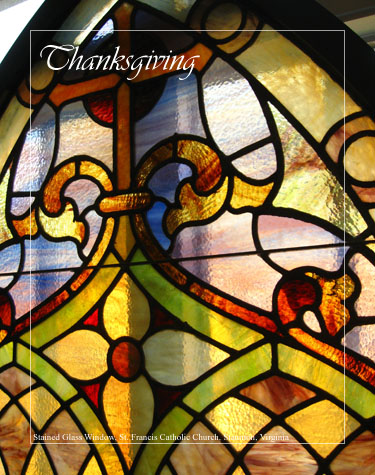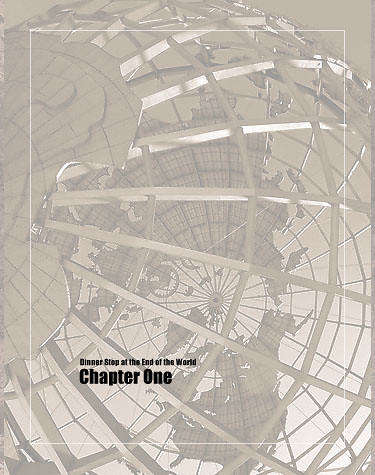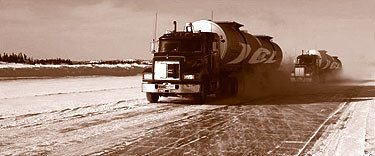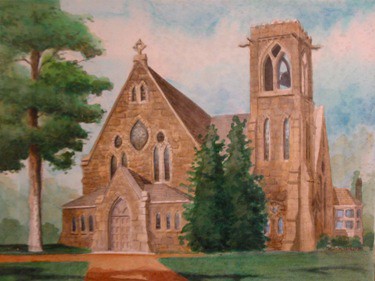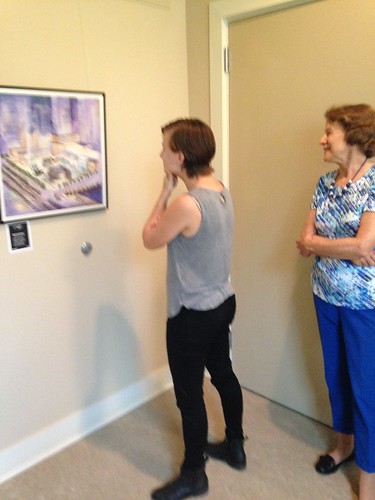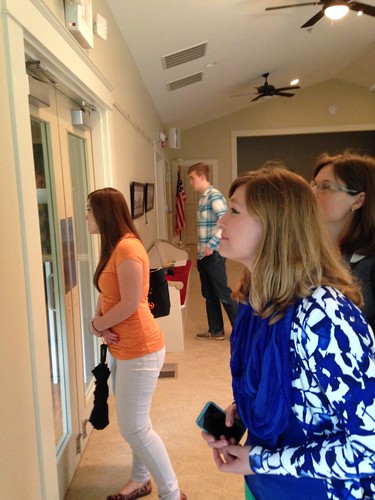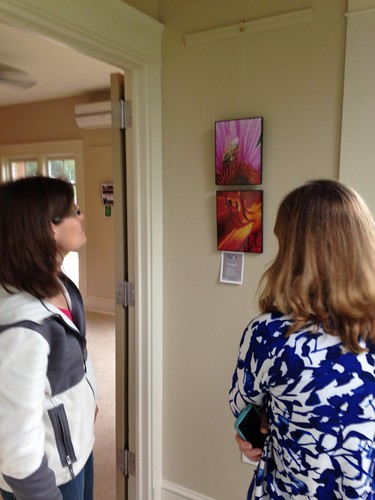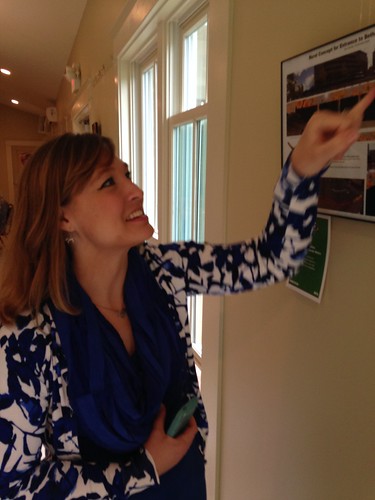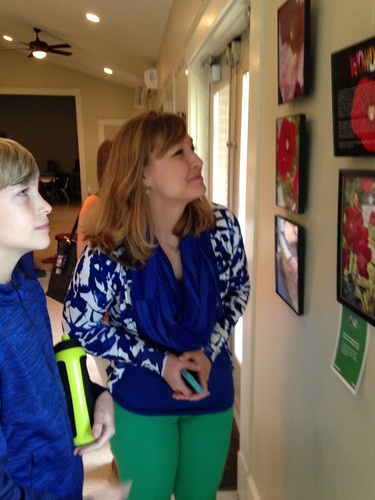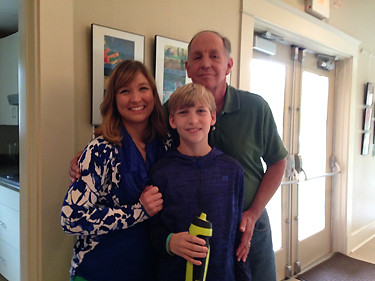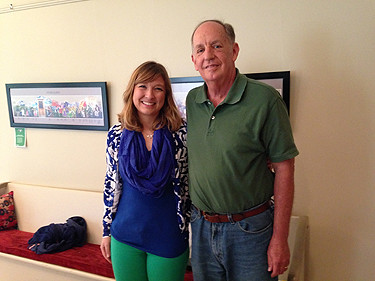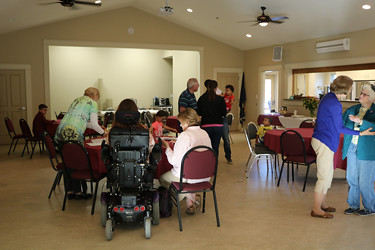
Michel Dufrénoy's Guide to Our Past Century
By Bob Kirchman
Copyright © 2020, The Kirchman Studio, all rights reserved
In 1863, right after the publication of Five Weeks in a Balloon, Jules Verne presented his publisher Jules Hetzel the manuscript for Paris in the Twentieth Century. Hetzel rejected it. Verne’s great-grandson, Jean Verne discovered the manuscript and published it. The story follows young Michel Dufrénoy through a future world that has forgotten the influence of true art and fallen into a harsh utilitarianism. The story ends with Dufrénoy collapsing in the snow. Here I engage in a bit of ‘fan literature’ as I offer a sequel to Paris in the 20th Century.
So this is what death is like” thought Michel Dufrénoy. His hand turning blue clutching the ruined violets. The demon of electricity no longer tormented his mind. Instead he heard what must have been the voice of an angel. As his life ebbed away the young poet heard a lovely voice… strangely familiar. Something stirred him to a heightened consciousness and the voice grew stronger. Now imperative! “Wake up!” His mind jolted to alertness and Michel thought to himself “this cannot be!” Yet, in the thoroughness of his search, he had stumbled into this precinct most thought deserted… yet there was the voice… again! Begging him to rouse! Dufrénoy struggled to rise and fell unconscious back into the snow.
Consciousness returned and Michel found himself lying on a mat in some sort of subterranean conduit. It was a round tube lined with brick and its walls bore the evidence of seeping water, the stains confirming the young man’s suspicion that he was indeed underground. At this moment, anyway, the tunnel was dry. Michel was wrapped in blankets and surrounded by heated bricks. He was coming back from the dead! A single light dangled from a wire in the tunnel and though it was electric, it was dim – an antiquated device which gave a very limited light to the catacomb in which it shown. As he stirred, an old woman emerged from the darkness to check on him. “How do you feel?” she asked. Michel Dufrénoy could only manage a groan.
So, what had befallen our young protagonist? Though he would not remember it, his new benefactor told him the story as he regained his faculties. Indeed he had fallen in the snow of the cemetery and was almost dead when a member of their group returning to the catacombs found him. This person tried to rouse him but when she could not, convinced some of the community to risk bringing him inside. The tombs of major cities often were places not inhabited – but providing shelter to those outside of the civilization proper. In Rome, the catacombs had provided space for the faithful to worship during the harsh reign of unfriendly emperors. Here in the mausoleum district was a bit of abandoned air and steam tunnel in which lived a community in exile.
The entrance to this place was a well-hidden shaft built for maintenance that was inside the precincts of the cemetery. The falling snow had made it imperative that they refrain from sorties outside the tunnels so as not to leave footprints but one of their members required medicine and so a close relative had volunteered to carefully leave the community and return. She was the one who found Michel. There are many stories, particularly from the great American war a hundred years before, of departed loved ones appearing in dreams to their most cherished as they leave this world and Michel pondered the voice he recalled so clearly in his brief moment of regained consciousness in the snow. Indeed the ruined violets spoke to a love that would sacrifice – a higher love from an abandoned time.
He thought about the modern technocrat’s abandonment of faith in the Divine – and the ‘miracles’ recorded in the past that the moderns derided. Even Michel was no strong believer. The church existed to instill order in society and bury the dead. It was not a good thing to have religious fervor as that was often the stuff of conflict. But the Twentieth Century had experienced great travail as a result of diminishing faith in other ways. True, there were no longer wars over doctrines but the life of family and community had withered as personal satisfaction became the only motivator in society. Michel had never thought much about the Divine, but now he pondered his strange new circumstances and the vision that had preceded them.
Chapter Two
When Michel Dufrénoy regained a bit more consciousness he was delighted to see his old friend Monsieur Richelot! The old professor warmly embraced his pupil and after some amazed pleasantries, told his story. “Indeed I was being evicted for not paying my rent. My tenure as a teacher came to an end with the withdrawal of my last miserable student. One of my old colleagues came to visit me as I was cleaning out my office and let me know of this place. Lucy and I have joined the classics in exile, I fear. You must, however, be extremely grateful that she dared to go out for my much needed medicine, for it was she who found you, almost frozen to death! Be assured she convinced us to go outside at great risk and bring you inside. Thankfully the snow keeps falling and we have other entrances when we need them.”
At that moment Lucy emerged from the darkness, her eyes saying more than any words, even those of a great poet, could ever hope to express. Michel tenderly squeezed her hand, apologizing for not successfully conveying the violets to her. At that she raised her other hand displaying the ruined blossoms. Sweet laughter filled the illuminated space in the tunnel!
What followed was a long and slow period of healing. The three friends discussed their cherished literature and read aloud from volumes Richelot had been able to bring into the catacomb. Meals were bland, assembled from a forgotten cache of survival grains, primarily rice, that had been discovered in a forgotten shelter from times when men still waged war. Mushrooms, grown in the tunnels, provided flavor and some additional nourishment but alas, there was no way to create the richness of flavor that most had enjoyed above ground. Michel asked about Quinsonnas. Was there any news of his old colleague? Richelot knew nothing. Would the pianist emerge to ‘Astound the Age?’ No one knew. Gradually Michel met the other members of the community. There were poets, painters, musicians and dreamers. Misfits all!
As the young man grew stronger, it was time for him to enter into the life of the community. Richelot’s recommendation was all that it required. Now he was party to the deeper discussion of what would become of them. It was already decided that modern France held no place for them, but the plan was to immigrate to French America. How would they pay for passage in steerage of some vessel like Leviathon IV, the young man wondered? Richelot explained, “There are others, who you will not see. They are still in the employ of industry and commerce, but their hearts are with us. We have entered into a pact that will take us all to the wilds of Quebec and the acquisition of some land on which we may farm… and create! Will you come with us?”
Dear Monsieur Richelot! You know my answer.”
And so, young Dufrénoy entered into the life of the community. He often ran the dangerous errands necessary to maintain contact with the working members of the resistance. His skill at stealth made him an important agent of the little group and though there was no wealth to the group as yet, he mustered his courage to pursue talk of a future with Lucy. He could make no promise of established wealth, but he could offer the strength of a pioneer. He would work like a dog to provide for his family and in a new world, Hopes would become reality. Though he had lost the manuscript, Michel recalled the best of his words and began to write anew.
The Winter of the great freeze grudgingly came to an end. For the next year the group continued to work and save. Dufrénoy made his way into the outlying suburbs of Paris and secured employment as a clerk. He was able to rent a bunk in a modest dormitory and so contribute more to the cost of passage. With the blessing of the community he purchased some new clothes as well. His trips to the catacombs were of necessity few, but one day he appeared in his new clothes with a bouquet of local violets and a basket of nice foods and wine. “Monsieur Richelot,” he began, “I have to ask you a very important question.”
So began the engagement of Monsieur Dufrénoy and Lucy. The wedding would take place on the first day the ship was in international waters!
Chapter Three
Dufrénoy returned to his work a man with a mission. His employers thought him ambitious and seeking advancement. He soon rose to the level of the management he despised but kept to his simple lodgings. This required no small feat of stealth in itself, for an upwardly mobile young man was expected to live in the high opulence of self-indulgence he was entitled to. Michel deftly acquired a set of house plans and spent a bit of break-time in marking them up, changing room dimensions and moving walls. Possibly the dwelling so rendered could be built in Quebec. On weekends he sometimes went to look at land. His coworkers, convinced of his energies being expended in pursuit of the perfect dwelling, wondered not at his current economy of living.
His closest comrade at work was a Monsieur Jean Dumont, a clerk as he was, who had some interest in the arts, though he professed no talent. They occasionally discussed literature together though Dumont’s tastes disturbingly favored such works as ‘Song of the Turbines.’ Still, he was eclectic enough in his tastes that he possessed some of the old volumes. His reading included the works of the great engineer Claudius Crozet, who had built railroads in America and Isambard Kingdom Brunel. Rather than a crass fascination with industrialism in itself, Dumont admired these engineers of French descent for the poetry of their designs. Brunel’s bridges, though works of infrastructure, were works of art as well. Often his bridges incorporated Egyptian themes and his arches were graceful to behold. His Clifton Suspension Bridge was so beautiful it became the Iconic symbol of an English City.
Dumont and Dufrénoy worked for a large company that specialized in building bridges and highways. They both lamented the utilitarian nature of the projects they built in 1962. They also seemed to share a more frugal outlook in personal matters than their colleagues and often enjoyed a drink together, eschewing the lavish evenings enjoyed by their fellows. Jean had a modest house near the company which he lived in with his wife and children. Eventually he offered Michel a very reasonable rental of his extra bedroom. Since it was not much more than the dormitory and there was no commuting expense, it was a deal quickly sealed. On the occasional weekends when he went to see Lucy, there was nothing at all suspicious about it, save he simply disappeared from view for a few days.
The next year progressed rapidly and soon it would be time to sail. Since he lived ‘above ground,’ there was nothing unusual about Michel’s resignation and announcement that he was off to the Americas. Surely he would find employment with those audacious companies proposing even bigger motorways and a bridge from America to Asia! The future was bright indeed and Monsieur Dufrénoy would be there to take part in it! Passage was secured on a German vessel, the Wilhelm, for the Spring of 1964.

In 1961, Russian engineer Peter Borisov proposed a dam across the Bering Strait that would carry a superhighway between Siberia and Alaska. The dam was planned as a climate modifying proposal that Borisov believed would warm Siberia. [1.]

Michel Dufrénoy's Guide to Our Past Century
By Bob Kirchman
Copyright © 2020, The Kirchman Studio, all rights reserved
Chapter Four
After the Wilhelm left the Paris Canal, it sailed briskly for six days to reach New York. Lucy and Michel were married by the captain and enjoyed their ‘homeymoon cruise’ to the new world. The Wilhelm was a smaller vessel than Leviathan IV and carried freight and passengers. The staterooms could be had for a bargain so the group traveled in style compared to steerage in the larger ships. Each cabin had an ample porthole and since there was no class distinction on a freighter, the group enjoyed full access to the deck for daytime recreation. The German working man demands good victuals, so the food was better too. After life in the catacombs it was refreshing to soak in light and sea air for even a few days. The crewmen were friendly and personable.
Richelot was happily surprised at the captain’s ample supply of Rhine wines. He had expected only beer. Here he discovered another irony. The captain had a very fine collection of music discs and played Motzart and other fine composers. Captain Zimmerman remarked to the old scholar: “Funny, but the fine things of the past have been spurned by the intelligentsia but we working stiffs have now embraced them as our own. In government schools they are taught to embrace discordant harmony but you will find that in places such as this, we educate our own children. They often find a taste for the good things quite on their own.” Indeed the mess room, if you would stoop to calling it that, featured some fine Romantic paintings from the likes of Frederic Church and the other Hudson River School painters. Between meals it served as a classroom for the crews’ children. If Leviathan IV was a ‘floating city,’ Wilhelm was in itself a floating community.
Indeed there was a sense of extended family here as wives and children sailed alongside their seafaring husbands, plying artisan trades that enriched their floating village. There were manufacturers of clothing, brewers, carpenters and leatherworkers. Families taught their own children and organized athletic games for them on deck.

1964 New York World's Fair Painting. Artist Unknown.
Chapter Five
All too soon they made landfall in New York City’s harbor. Here towered buildings taller even than those in Paris. The Parisians wandered the Manhattan streets in a sense of awe. A train was engaged to carry them to Long Island’s village of Flushing, where they could stay in accommodations built for the 1964 Word Exposition in Flushing Meadow Park. The fair was about to open and the hotels, fearing a lower attendance at first, offered very inexpensive lodging in an effort to cut their expected losses. That is how Michel and Lucy Dufrénoy found themselves at the Fair.
Joining themselves to the first-day crowds, the young couple entered the ‘world of the future’ presented by the fair. It differed from the great World’s Fairs of the turn of the Century in several ways. First of all, the buildings were no longer in the form of a white classical city, they were generally more utilitarian. Among them was a giant ferris wheel in the form of an automobile tyre that towered above the fairgoers. There was a giant umbrella, representing an insurance company. An enormous egg towering above a forest of metal trees housed an exhibit about modern calculating machines.
There were giant boxes on stilts. Elevated trains ran on a single rail suspended above the fairgrounds. Flying machines landed and took off from the top of a large ‘T’ shaped structure. In the center of it all towered a gigantic model of the earth made from steel panels and struts. The continents were solid and the oceans described only by the meridians, which formed the structure for the massive globe. For three days the French immigrants wandered about the fairgrounds, taking in the wonders of the world. They awaited their journey by train to Montréal in French America. From there they would set out for parts unknown.

1964 New York World's Fair Painting. Artist Unknown.

1964 New York World's Fair Painting. H. L. Klein.

1964 New York World's Fair Painting. Artist Unknown.
Chapter Six
The train made its way to Albany along the much painted Hudson River and the evening light on the water evoked those romantic images anew. From Albany, the next train made its way North to the customs house in Rouse’s Point near Lake Champlain. Then it was but a short journey further into Montréal. The travelers were disheartened to find that Vieux-Montréal, the old French center of the city, had been swallowed up in a sprawling modern metropolis much the same as modern Paris. In some regards it differed from New York only in that the language was different. There was no abundance of lodging here, however and the little group experienced their first tenement housing as they prepared to acquire land for their new settlement.
It seemed now that fortune had turned against the weary band as there was little property to be had in the rich farming lands. What remained was Northern muskeg and permafrost – land that did not promise any kind of existence past subsistence farming. Michel was charged with taking the search further out and found to his chagrin that the cost of anything that would support the colonists far outpaced their limited resources. Montréal offered little in the way of employment opportunities and the group squeaked by doing odd labor jobs as they came up.
Michel had kept correspondence with Jean Dumont, who informed him that he was headed to British Columbia to take a position with a highway builder. He would be presently traveling by airship to Montréal and then heading West by railway. “Would you like to come along, Michel, and seek opportunity for yourself where the world is expanding?”
Chapter Seven
Jean Dumont stepped off the airship in Montréal and greeted Michel Dufrénoy warmly. “I’ve just a few hours before I must catch my train Westward,” he said, “but I am so glad we could at least spend an evening together for old time’s sake.” Dumont’s wife and children would come later after he had established himself in his new position. “The Northwest Corridor Corporation will eventually connect America to Asia,” Jean continued. “You would do well to come with me to that place where opportunity is in such abundance. I could get you on as a clerk in our Calgory office. The great road to Alaska is already in place but we are widening it to a primary route with multiple travel paths just like our autoroutes in Paris. Astounding things are being done and you and your Lucy can have all the success you desire!”
Dufrénoy quizzed his former colleague relentlessly over dinner about the works in Western Canada. Dumont provided an extremely detailed description, adding: “There are untouched regions out there. It’s a chance to literally build a whole new world!” Dufrénoy pondered that statement gravely: “You mean, one would be able to create the culture from the ground up?” “Exactly,” said Jean, “There will be no relics of the past to impede the progress of mankind to that ‘great big beautiful tomorrow!’ Think of it, Michel, a clean slate on which to chart the future into the 21st Century! Antiquated notions no longer will restrain us. It will be a brave new world!”
There is NOTHING in those lands?” Dufrénoy asked, somewhat amazed. “Oh, there are some small farming communities, the local indigenous people and some old Russian Orthodox communities, but they are small and isolated. I imagine when our great corridor is laid out they will remain small and isolated. When the United States built the first gravel track along the route to Alaska, the local natives had never even seen a white man – Europeans were so completely unknown to them. The United States sent a group of Southern soldiers to build the road in the remotest part of that territory. They were the descendants of Africans who had been sold into slavery in that part of the world a Century ago – now free, but still lacking stature in that society. Their 97th Construction Battalion gave them purpose, and eventually stature as they built that most difficult section of the road.” [1.]
Dumont went on to say that the natives had heard reports that the white men were coming building the road. When one of the advance men for the 97th came into that region, a stunned native announced; “The first white man I saw was BLACK!” Jean went on: “The road was built in the days when Russia and America were still strong adversaries. In our day it is seen more as a way to connect those two peoples.”
Chapter Eight
Dufrénoy pondered the possibilities of true frontier and thought long and hard about the opportunity to fund the community’s relocation into someplace like the Yukon Territory where culture would actually be quite content to leave them alone. The men of the 97th had happily returned to warmer climes when the road was opened. One of them was Nehemiah Atkinson, who returned to New Orleans in Louisiana and became a tennis instructor to young people. [2.] Michel came across a small biography of this man. Indeed it seemed that this Northwestern country offered great opportunity for achievement and recognition, but most who came here wanted simply to do the job and go home.
Thousands of miles of vast wasteland, yet those few who lived there would not be moved. Amish folk were able to farm there, making the most of the short growing season. These were people from a simpler time it seemed, content to live a simpler way of life. If asked, they would cite their religious beliefs or their tie to a particular place. Some of their children did indeed go off to the big cities – but it was to be noted that many of them later returned. Such was the draw of warm pre-industrial society and extended family.
The more he thought about it, the more it became clear to Michel that this great road would always remain a conduit, but would not allow modern culture to spread out much past the required service areas. The Orthodox villages seemed especially appealing, as the very term ‘Orthodox’ seemed to imply that some foundation of the old culture would always be present. “What better place,” thought Dufrénoy, “to preserve and encourage the arts until they are strong enough to inform the culture again?”
And when the arts have rejuvenated themselves,” his mind continued, “the modern highways will be there to carry the renaissance to the ends of the earth!”
Chapter Nine
So it was that Michel Dufrénoy found himself traveling to Calgory along with several of the men of the community to take up work in the Northwest Corridor. The men would work and establish the means to bring the rest of their fellows and families West to a place they would find to settle in. The country they rode through seemed so vast and beautiful that it filled young Dufrénoy with its promise! He thought of the New York Fair and shuddered. It was amazing in its own way but in retrospect it seemed like when children place household items out on the floor in play to create a village. It is interesting but is heavy on large forms and lacks in subtle detailing. It is astounding to behold, but over time it does not evoke a higher appreciation.
Here in the American West, there arose a landscape that never ceased to inspire wonder. It seemed so vast as to resist the forces that had homogenized the great cultures of the world. In it the locomotive seemed small, the track but a line, and man was once more aware that there was more! It was that sense of more, Dufrénoy reasoned, that had informed culture in the past to seek the essence of truth and beauty. In modern thought, materialism and pragmatic utilitarianism ruled, but here in the limitless West, those things were not enough. The march of shadows in setting sun drowned out the songs of pistons and turbines. Here was a world too vast to comprehend coming into being.
The ancients had their cosmology firmly rooted in EX NIHILO Creation – the belief that the Divine had created everything from nothing! That implied that the stuff of creation, the laws of physics, and the creation itself were the product of some beautiful Divine Design. The moderns had in the end of the Nineteenth Century decided that they would only believe in what they could see. “Matter,” they said, “always must have existed and just formed itself through random processes.” Though science described the processes, the scientist no longer saw the sublime nature of the process. Another concept thrown to the wind was the concept of IMAGO DEI, that is the belief that mankind is created in the image of the Divine.
Thus it was that Michel Dufrénoy found himself fleeing a world where man was reduced to a cog – to a world where man was indeed heir to something better. His letters to Lucy were full of such thoughts and she cherished the seed that they planted. Together they would give their children everything that had been thought lost.
THE END

